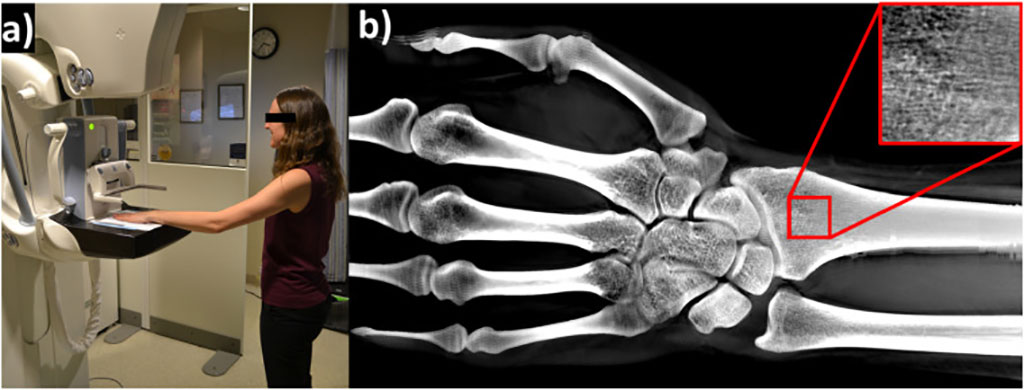Digital Wrist Tomosynthesis Assesses Women’s Bone Health
By MedImaging International staff writers
Posted on 08 Feb 2021
A new study shows how digital breast tomosynthesis (DBT) scanners can also be used to perform bone density measurements.Posted on 08 Feb 2021
Researchers at Henry Ford Health System (Detroit, MI, USA) conducted a study to explore the feasibility of using DBT devices for digital wrist tomosynthesis (DWT) so as to measure bone mineral density (BMD), cortical bone thickness, and microstructural properties of the wrist bone. The results were then correlated to reference measurements acquired via microcomputed tomography and dual energy x-ray absorptiometry (DXA). The researchers recruited five patients, (19 to 75 years of age), who aligned their left hand on a generic hand template taped to a DBT machine.

Image: A 19-year-old woman undergoing DWT in a DBT scanner (Photo courtesy of Yener Yeni/ Henry Ford)
The results showed that measurements from DWT imaging with a DBT scanner were highly repeatable; in ex-vivo trials, DWT derived BMDs were strongly correlated with reference measurements, as was the cortical thickness measured at lateral and medial cortices, and the majority of microstructural measures. In-vivo measurements were quick and tolerated well by the volunteer patients with no discomfort, and appeared to be different between young and old participants in a preliminary comparison. The study was published on December 13, 2021, in Bone.
“DWT is feasible in a mammography setting, and informative on bone mass, cortical thickness, and microstructural qualities that are known to deteriorate in osteoporosis. To our knowledge, this study represents the first application of DBT for imaging bone,” concluded lead author Yener Yeni, PhD, and colleagues. “It is reasonable to expect that with increasing adoption of DBT and continued high adherence to breast screening, bone screening would become more prevalent if offered in coordination with DBT breast exams.”
Osteoporosis is defined as a bone density of 2.5 standard deviations below that of a young adult, as measured by DXA. It is the most common reason for a broken bone among the elderly, and may be due to a lower than normal peak bone mass and a greater than normal bone loss. It is more common in women than men, with 2-8% of males and 9-38% of females affected after menopause, usually due to lower levels of estrogen.
Related Links:
Henry Ford Health System










 Guided Devices.jpg)



